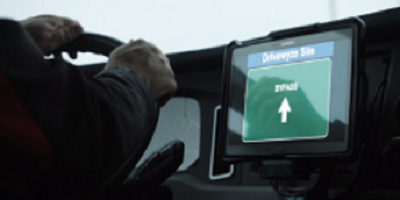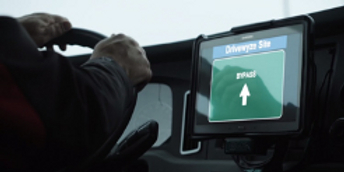
Weigh station bypass programs have become an integral part of the trucking industry. All carriers have experienced the impact of roadside inspections on their operations, from route delays to increased costs. Bypass programs provide a solution to these challenges.
While fleets are benefiting from the continued improvement to bypass technologies, there are common questions and misconceptions about how bypass programs work. By understanding the basics of bypass systems, fleets can take advantage of significantly enhanced

operational efficiency, driver safety, and employee satisfaction while increasing their opportunities for bypasses.
The Most Common Misconceptions About Bypass Programs
1. Bypass programs will result in more inspections.
Bypass programs are used by officers to reward carriers with good safety ratings and keep inspection sites running smoothly. Bypass screening technology allows law enforcement to review a carrier’s Inspection Selection System (ISS) score, the license and vehicle identification number (VIN), and the vehicle’s weight. Inspection personnel can focus their efforts on unsafe vehicles while allowing safer fleets to remain on the mainline.
2. Bypass programs are used to track drivers
Most bypass services use secure mobile technology to ensure no sensitive information is delivered to law enforcement, such as a driver’s Hours of Service (HoS), medical records, and Commercial Driver’s License (CDL).
Bypass technology is designed to only screen for vehicle-specific criteria, such as the ISS score, license plate, VIN, USDOT number, and record the date and time that a truck bypasses or is asked to pull into a weigh station. The processing of this information is strictly regulated and does not leave the station.
3. Bypass programs require a transponder
While some bypass programs run on transponder-based functionality, more advanced technologies, like Drivewyze PreClear®, are completely transponder-free. GPS-based mobile software allows vehicles to stay on the mainline without slowing down or changing lanes to drive under a transponder reader.
4. Bypass programs use CSA scores for screening
The only safety score screened by a bypass program is the carrier’s ISS score, which is an aggregation of a fleet’s Compliance, Accountability, Safety (CSA) scores. It provides law enforcement with a more comprehensive view of a fleet’s safety profile.
However, safety scores do have important roles in how weigh station bypasses are granted and, if managed well, can increase the opportunity for more green lights en route.
How ISS and CSA Scores Apply to Bypass Programs
Although similar, CSA and ISS scores have distinct differences that come into play during a truck’s route.
● The CSA score is a collection of safety data of roadside inspections, crash reports, investigation results, and registration details from the last 24 months, aggregated by the Federal Motor Carrier Safety Association (FMCSA).
● A fleet’s ISS score is an aggregation of the CSA scores. Ranging from 1 to 99 (100 being out of service), an ISS score reflects a carrier’s overall safety profile. The lower the score, the better the safety rating. Bypass technology screens for a vehicle’s USDOT number to locate the fleet’s ISS score in the federal system.
A great ISS score will typically result in more bypasses; a truck with an outstanding score could receive bypasses up to 98% of the time. Bypass services, like Drivewyze PreClear®, use the ISS score to determine the likelihood of performing an inspection.
However, a poor ISS score does not mean that a fleet won’t receive any bypasses. It may receive fewer, but a carrier can improve its safety score over time with a software-based bypass service that can automatically increase a carrier’s opportunity for bypass based on sheer volume.
Invest in a Bypass Service for more Green Lights
Adopting a transponder-less bypass service can provide carriers with significant cost and time savings. In one case, Mesilla Valley Transportation saved 1,579 hours and over $164,000 in operating expenses in just one month with such a system. Fleet managers should consider three primary criteria when selecting a 100% software-based bypass service:
1. Network Coverage on Routes, Nationwide & Beyond
Choose a bypass service that operates on the broadest possible network to increase the opportunity for a bypass, especially if the carrier operates in multiple jurisdictions. The bypass service should be available at fixed and mobile inspection sites, with functionality at scales that are Weigh In Motion (WIM) enabled and scales that are not. Currently, the bypass service with the largest bypass network across the industry—including two Canadian provinces—is Drivewyze PreClear®.
2. Ease of Use, For Efficiency & Safety
Select a software-based bypass service that can be easily integrated onto the cab’s existing telematics devices (ELD) or the driver’s personal mobile phone or tablet.
Software-based bypass services leverage GPS and geo-fencing technologies and provide hands-free functionality with advanced notification capabilities, like heads-up notifications for upcoming inspection stations and safety alerts for high-risk areas. This allows drivers to stay on the mainline for longer, avoiding delays or dangerous lane changes.
3. Opportunities for a Connected Truck
A bypass service that allows for cross-platform integration onto existing telematics and mobile devices means carriers only have to invest in the base software once. Additional software solutions can be installed with no extra hardware needed. This gives fleets the opportunity to expand their operational capabilities quickly and cost-effectively.
For example, Drivewyze’s Safety+ service is an application that runs on the fleet’s existing ELD system and proactively prevents accidents and citations through in-cab and back-office driver coaching.
Real Fleets, Real Results
Wondering how your fleet will benefit from investing in a bypass service? These fleets found tangible solutions to their operational problems with the leading software-based bypass service from Drivewyze PreClear®.
● After implementing a transponder-less bypass service in 2015, USA Truck Capacity Solutions saved more than $1,360,000 over six months and returned 12,576 hours of drive time to the operation.
● In an effort to move away from its transponder-based system, which only worked at permanent weigh stations and caused technical difficulties for drivers, Cargo Transporters transitioned to a software-based service. This resulted in a 748% ROI, including a cost savings of $36,000 in the first two weeks of use.
● Barole Trucking’s outstanding safety score had Commercial Vehicle Enforcement (CVE) officials recommend Barole invest in a weigh station bypass service to avoid time spent at inspection sites. The fleet has since reduced weigh station delays by 17 hours and increased the productivity of their out-of-state division trucks by up to four additional loads every month.
Interested to see how a bypass system can improve your fleet operation? Start a free trial of North America’s largest weigh station bypass service, Drivewyze PreClear®.

